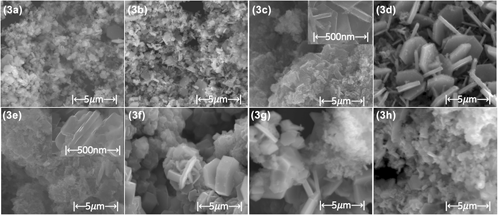Crossref Citations
This article has been cited by the following publications. This list is generated based on data provided by
Crossref.
Elkhouly, Heba I.
Abdel-Magied, Ragab K.
and
Aly, Mohamed F.
2019.
Date palm seed as suitable filler material in glass–epoxy composites.
Iranian Polymer Journal,
Vol. 28,
Issue. 1,
p.
65.
Sun, Jing
Wang, Xuqin
Guo, Lijie
Zhang, Xiaobo
and
Wang, Haowei
2019.
Synthesis of nanoscale spherical TiB2 particles in Al matrix by regulating Sc contents.
Journal of Materials Research,
Vol. 34,
Issue. 07,
p.
1258.
Ma, Siming
Wang, Yuqing
and
Wang, Xiaoming
2020.
Microstructures and mechanical properties of an Al-Cu-Mg-Sc alloy reinforced with in-situ TiB2 particulates.
Materials Science and Engineering: A,
Vol. 788,
Issue. ,
p.
139603.
Xu, Pian
Lu, Gang
Zhang, Lei
Zhou, Shitong
Yan, Yuping
Yan, Qingsong
and
Jiang, Lihong
2021.
Effect of holding time on the growth morphology of in-situ TiB2 particles.
Materials Today Communications,
Vol. 29,
Issue. ,
p.
102953.
Xue, Yanqing
Hao, Qitang
Li, Bo
Wang, Xinliang
Yin, Chengze
and
Zhang, Han
2021.
Improving the strength-ductility trade-off of TiB2/Al-4.5%Cu composites via Mg–Ag microalloying and multi-step heat treatment.
Materials Research Express,
Vol. 8,
Issue. 5,
p.
056519.
Mao, Hongkui
Li, Cong
Dong, Yuan
Wang, Yu
Xu, Hong
Yu, Qi
Shang, Yuncong
Li, Xiaofeng
and
Zhao, Zhanyong
2022.
The effect of Mn on particles morphology and property of 5 wt% TiB2/Al-4.5Cu-0.4Mn alloys.
Journal of Alloys and Compounds,
Vol. 904,
Issue. ,
p.
163907.
Chen, Zhi-qiang
Hu, Wen-xin
Shi, Lei
and
Wang, Wei
2023.
Effect of rare earth on morphology and dispersion of TiB2 phase in Al-Ti-B alloy refiner.
China Foundry,
Vol. 20,
Issue. 2,
p.
115.
Kong, Xiang
Wang, Yu
Fan, Haotian
Wu, Junteng
Xu, Hong
and
Mao, Hongkui
2023.
Effect of high cooling rate on the solidification microstructure of Al–Cu/TiB2 alloy fabricated by freeze-ablation casting.
Journal of Materials Research and Technology,
Vol. 25,
Issue. ,
p.
593.
Li, Cong
Xu, Hong
Mao, Hongkui
Lian, Peng
Wei, Qi
Song, Feng
and
Wang, Yu
2023.
The effect of V on the morphology transformation of TiB2 particles in Al-4.5Cu-0.18 V matrix.
Journal of Materials Research,
Vol. 38,
Issue. 5,
p.
1377.
Jia, Jing
Zhuang, Weibin
Li, Jinghui
Cao, Qing
and
Liu, Jingfu
2024.
Effect of La on Microstructure, Mechanical Properties and Friction Behavior of In Situ Synthesized TiB2/6061 Composites.
Metals,
Vol. 14,
Issue. 10,
p.
1169.
Huang, Ting
Zhao, Lijun
Sun, Xiujuan
Xu, Junhua
Wang, Zhidong
Yu, Lihua
Lu, Zhengping
Ding, Yi
long, Lin
and
Zhang, Hao
2025.
Synergistic strengthening effect of Sc and TiB2 particles on the microstructure and mechanical properties of 7055 aluminum composites.
Journal of Alloys and Compounds,
Vol. 1024,
Issue. ,
p.
179980.



